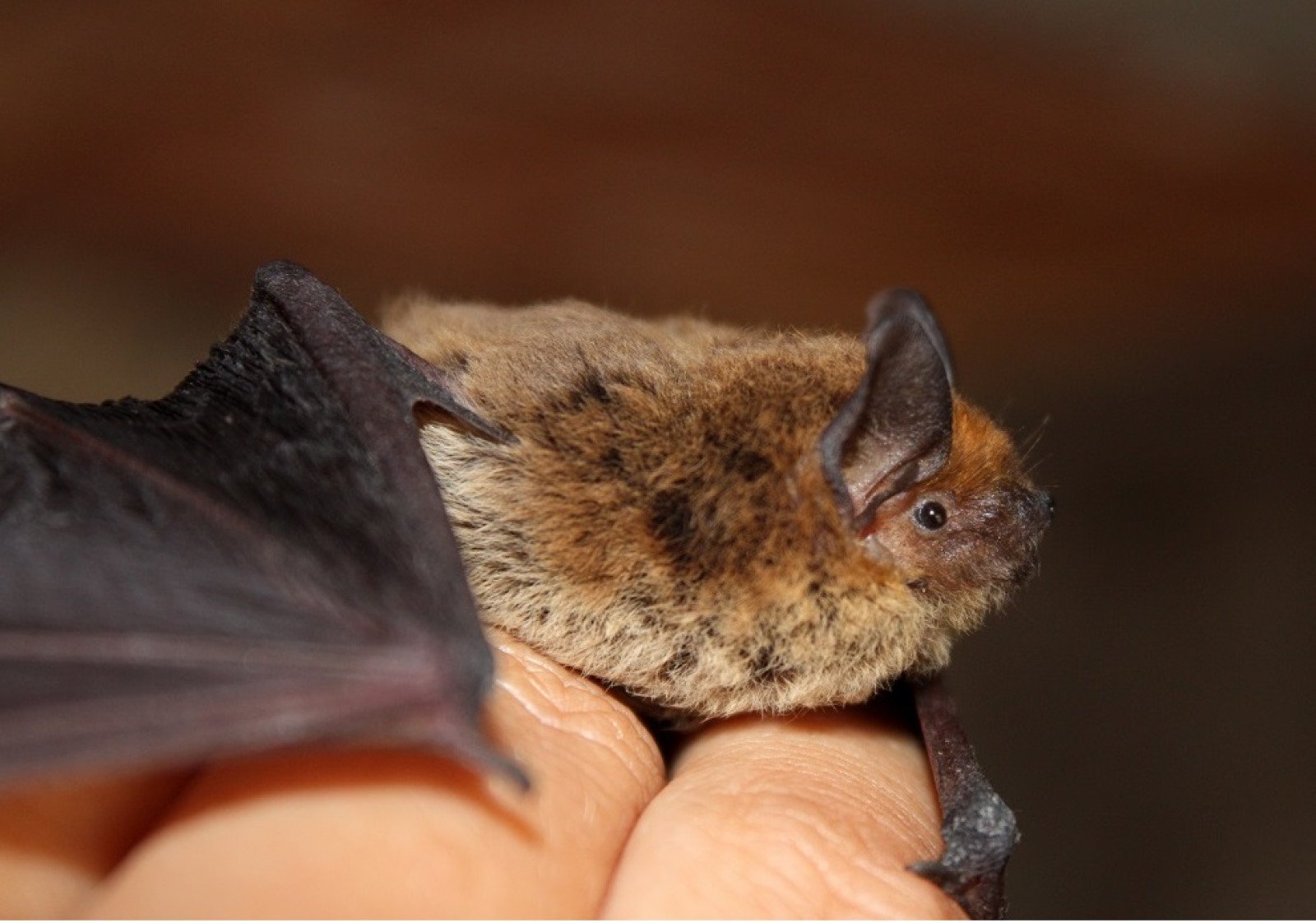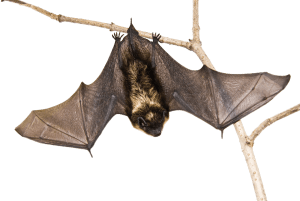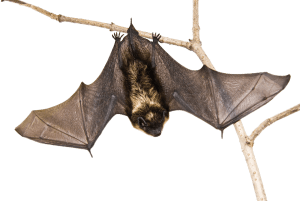
Overview
In this activity, students play a game to learn how bats can help farmers by eating insects that eat their crops, reducing the need for pesticides that are harmful to the planet.
Instructions
What you'll need
- 40-60 objects that can be easily picked up, to represent “plants” like bandanas, pinecones, building blocks, stones, or any other small objects that are not breakable and will not roll around
- String/rope, cones or chalk or hula hoops to create circles on the ground for the game
- Open space for playing the game like outdoors in the playground or the gym
- Start with a discussion about bats and what they need to live and be healthy, and/or do the “Bats and biodiversity” activity.
- Power down the classroom and head outdoors to the playground or to the gym.
- Explain to students that bats can be useful to farmers, as they eat the insects that try to eat the crops. Discuss that sometimes farmers use pesticides, like poison, to kill the insects and this is harmful to the planet and bats. Pesticides can pollute our soil, water and air which can harm plants, birds, wildlife, fish and crops. If we can encourage bats to eat the insects it is better for everyone.
- Explain that they will be playing a game where bats try to catch the insects that are eating the farmers’ crops.
- Using chalk, cones or rope, create a large circle in the middle of the space. The circle should be large enough for all the students to fit in. This represents the insects’ nest and is a safe space for the insects.
- Next, at the outer edges of the game space, using chalk, cones or rope, create 4-6 smaller circles (40 - 75 cm in diameter). Alternatively, use hula hoops to form the circles. Place 10 “plant” objects in each circle. These circles represent the farmers’ fields.
- Choose 3 students to be the bats; everyone else is an insect.
- Explain that the insects must all start in the insect nest in the centre of the playing area. Their goal is to fly out and bring back the “plants” from the farmers’ fields to their insect nest. They can only take 1 plant at a time.
- The role of the bats is to “eat” the insects by tagging them. If an insect is tagged, they are out and must go to the sidelines. If they are tagged while holding a plant, they must drop the plant in the spot they were tagged, and another insect can bring it back to the nest.
- The insect nest is a safe zone for the insects; the bats cannot go in the insect nest or tag anyone in the insect nest.
- Play the game until either all the insects have been “eaten” (tagged) or all of the plants have been “eaten” (taken to the insect nest).
- Try playing the game again but with more bats and see how this changes the game.
- Have a discussion after the game is over, considering these questions:
- How do bats help farmers?
- If pesticides are sprayed, how might that harm the bats?
- What could farmers do to encourage bats, like building bat boxes and reducing the use of pesticides?
- What could farmers use instead of pesticides, so we can protect all living things and prevent air, soil and water pollution? Have students consider:
- Planting a variety of species
- Introducing ladybugs to control aphids
- Attracting birds and bats with nesting boxes
Modify or extend this activity
- Follow up this game with the “Bat skits” activity where students use creative arts to teach others about bat protection.
Curriculum Fit
Grade 3 Science
Big idea
- Living things are diverse, can be grouped, and interact in their ecosystems
- Sample questions: What is biodiversity? Why is biodiversity important in an ecosystem? Interconnectedness means that all things are related to and interact with each other in the environment
Content
- Biodiversity in the local environment
Curriculum competencies
Questioning and predicting
- Demonstrate curiosity about the natural world
- Make predictions based on prior knowledge
Processing and analyzing data and information
- Experience and interpret the local environment
Grade 3 Physical and Health Education
Big idea
- Daily participation in physical activity at moderate to vigorous intensity levels benefits all aspects of our well-being
Curricular competencies
Physical literacy
- Develop and apply a variety of fundamental movement skills in a variety of physical activities and environments
Assessments
- Assess students’ participation in the game.
- Assess understanding of how protecting bats and bat habitat can be helpful for farmers.
Teaching Notes
Bat facts
Learn more about the little brown bat here, which is good for showing on a screen. Additional information on little brown bats can be found on Hinterland Who’s Who.
Good news
Bats in BC play significant roles in pest management and pollination. This article talks about how bats reduce the need for chemical pesticides and indicate ecosystem health by revealing insect population density.
Endangered species
The little brown bat (Myotis lucifugus) is on the endangered species list and needs our protection. Learn more at the Canada’s Species at Risk registry.
Pesticides
Pesticides are used to kill, repel, or control plants or animals considered to be pests, but can have harmful environmental impacts such as:
- Impacting climate change through the manufacturing and application process.
- Contaminating soil and causing air pollution.
- Polluting streams, ponds, lakes, and wells.
- Leaving residue in surface water that can harm plants, animals and contaminate groundwater.
There are various techniques farmers are using to decrease the use of pesticides like:
- Companion planting: marigolds keep away many insects.
- Crop rotation.
- Planting a variety of species.
- Introducing ladybugs to control aphids.
- Attracting birds and bats with nesting boxes.
For more information, check out alternatives to pesticides.
BC Hydro and species protection
BC Hydro continues to work on protection of a variety of species, including federally and provincially listed species and their habitats under the Fish and Wildlife Compensation Program (FWCP) and Water Use Plans (WUP).
There is Bat Enhancement Planning and Inventory at Buntzen, Alouette, and Lower Steve/Hayward Lakes. For more information, see the list of species-at-risk and how it's been addressed.







